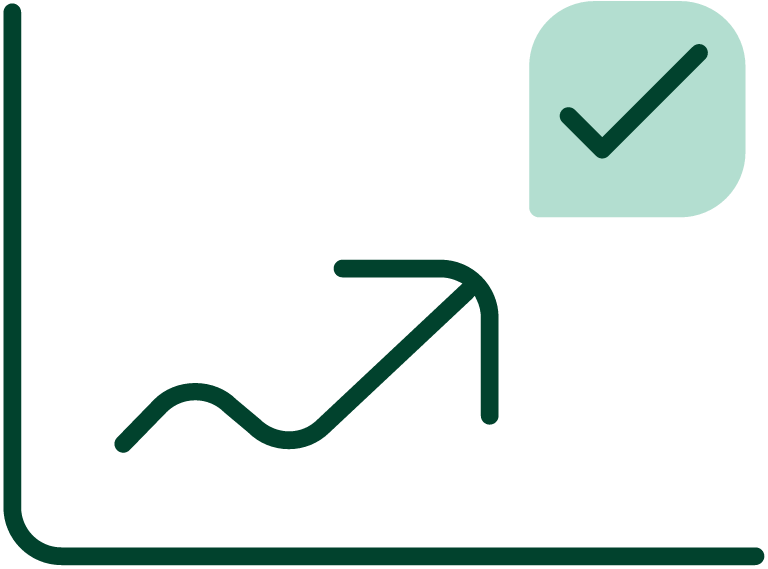Businesses often rely on cash flow that they haven’t yet received. Net income and sales operate on a delayed schedule, and companies crunch the numbers expecting to settle invoices and get paid sometime in the future. Once an invoice hits accounts receivable (A/R), it enters what’s called the average collection period. Other common names include “days sales in accounts receivable,” “average receivables collection period,” or “days sales outstanding (DSO).”
Your average collection period is an important key performance indicator (KPI). It’s smart to know how to calculate your collection period, understand what it means, and how to assess the data so you can improve accounts receivable efficiency.
What Is an Accounts Receivable Average Collection Period?
Businesses often sell their products or services on credit, expecting to receive payment at a later date. Your average collection period tells you the number of accounts receivable days it takes after a credit sale to receive payment.
You can understand how much cash flow is pending or readily available by monitoring your average collection period. Measuring this performance metric also provides insights into how efficiently your accounts receivable department is operating.
The Average Collection Period Formula
Typically, the average accounts receivable collection period is calculated in days to collect. This figure is best calculated by dividing a yearly A/R balance by the net profits for the same period of time.
You can determine net profits by comparing net credit sales during the period (most often a year or 6 months) and your average accounts receivable balance during the period. This is also called your “A/R turnover ratio.”
There are two A/R collection period formulas you can use for calculating your average collection period:
- The first average collection period formula multiplies 365 days by your accounts receivable balance divided by total net sales.
(A/R balance ÷ total net sales) x 365 = average collection period
Example: ($50,000 ÷ $800,000) x 365 = 22.8 days average collection period
- The second equation divides 365 days by your accounts receivable turnover ratio.
365 ÷ A/R turnover = average collection period
OR
365 ÷ (net credit sales ÷ average A/R balance) = average collection period
Example: 365 ÷ ($800,000 ÷ $50,000) = 22.8 days average collection period
Both equations will produce the same average collection period figure if you have the appropriate data.
What is an Optimal Average Collection Period?
Typically, the shorter your collection period, or the lower your DSO/higher your accounts receivable turnover, the better. A relatively short average collection period means your accounts receivable collection team is turning around invoices quickly and everything is operating smoothly. Longer collection periods may be due to customers that have financial issues or broader macroeconomic or industry dynamics at play. For example, if a company is facing high competition in their space, it may try to attract customers with more lenient payment policies.
Along with flexible payment policies, other strategies for optimizing your average collection period include continuous monitoring of accounts receivable and having clear processes in place for overdue and unpaid invoices. Your goal is for clients to spend less time in accounts receivable and more time paying bills promptly.
What’s more, your average collection period contributes directly to achieving company goals and growing your business.
Reduce Your Collection Period with Gaviti
Our platform automates reminders as well as internal or external escalations, and other collections actions, streamlining your collections process. Segment your customers by any criteria you wish. See your DSO drop and your cash flow increase within a matter of months.
Speak to a Product Specialist to Learn MoreWhy Calculating Your Average Collection Period Is Important
It makes sense that businesses want to reduce the time it takes to collect payment from a credit sale. Prompt, complete payment translates to more cash flow available and fewer clients you must remind to pay every month.
Calculating your collection period regularly is important because:
- It improves cash flow and liquidity. With more cash flow on hand, you have a better understanding of which expenses you can pay for immediately and how to best plan for future expenses. Or you can channel some of that cash for investment purposes.
- It raises profitability. It signals to stakeholders, lenders and credit agencies your ability to manage your A/R process, manage bad debt, and reduce your need for outside funding. When your company collects payments faster, it can pay its own bills faster and avoid interest or other fees associated with late payments.
- It impacts your business valuation and credit rating. It’s an important metric that lenders, investors and credit companies take into account when deciding upon the financial success of your business.
- It offers a benchmark for efficiency. While a typically shorter collection period indicates a healthy cash flow and better management, it’s also easier to use the calculation to compare with industry standards or competitors.
- It improves customer relationships. By regularly monitoring the collection period, you’ll be able to spot issues in customer payments ahead of time and proactively prevent them from damaging the customer relationship. Finding the right balance between a short collection period and the need for cash also helps avoid customer tension.
How to Monitor Your Average Collection Period to Improve Performance
The secret to accounts receivable management is knowing how to track and measure performance. It’s not enough to look at a final balance sheet and guess which areas need improvement. You must monitor and evaluate important A/R key performance indicators (KPIs) in order to improve performance and efficiency.
What Metrics Should You Track to Improve Your Cash Conversion Cycle?
When aiming to improve your cash conversion cycle (CCC), it’s essential to closely monitor two key KPIs that can show exactly where you need to make improvements to influence your company’s liquidity and operational efficiency. Below we describe a few metrics and the formulas to calculate them:
- Average Collection Period Formula – As previously mentioned in this article, the average collection period formula, also known as the receivable collection period formula measures the average number of days it takes for your business to collect outstanding receivables from customers. By tracking this metric, you gain valuable insights into your company’s credit policies and effectiveness in managing customer debt.
- Days to Collect Formula – This formula provides a clear snapshot of your business’s efficiency in turning receivables into actual cash flow. While the specific formula is straightforward, involving your accounts receivable balance and net credit sales, the value of this metric lies in its ability to spotlight potential issues in credit management or customer payment patterns early on. Here is the formula:
Days to Collect = Net Credit Sales / Accounts Receivable × Number of Days in Period
Consistently high values indicate inefficiencies or overly generous credit terms, potentially tying up cash needed elsewhere.
Regularly evaluating these metrics enables companies to pinpoint operational strengths and weaknesses. Shortening the receivable collection period and reducing days to collect which can significantly improve liquidity, allowing quicker reinvestment into growth initiatives or debt repayment. Additionally, analyzing trends over time can help in making informed strategic decisions, such as revising credit terms or enhancing collections processes. Ultimately, tracking these metrics fosters proactive management of cash flow, ensuring healthier financial operations and stronger competitive positioning in the marketplace.
How Gaviti Helps Improve You A/R Collection Period and Beyond
In addition to monitoring the average collection period, Gaviti’s invoice-to-cash management A/R platform offers both traditional metrics such as your total A/R, DSO, collection rate, and customer risk along with unique smart KPIs for better analysis. These KPIs are part of Gaviti’s Collections Analytics, a comprehensive platform of A/R data that helps your business gain greater visibility into its A/R and collections performance and understand where it can be optimized.
Want to learn more about how Gaviti can help you calculate customized metrics? Contact us and Speak to a Specialist.






















